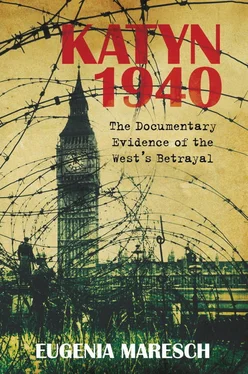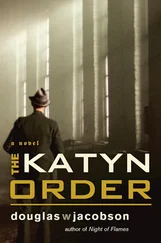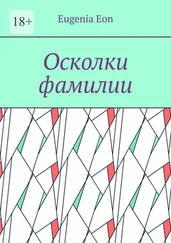13. The cumulative effect of this evidence is, as I said earlier, to throw serious doubt on Russian disclaimers of responsibility for a massacre. Such doubts are not diminished by rumours which have been current during the last two and a half years that some of the inmates of Kozelsk, Starobelsk and Ostashkov had been transported towards Kolyma, Franz Joseph Land or Novaya Zemlya, some or all of these being killed en route. It may be that this was so, and it may be that some less number than ten thousand odd were destroyed and buried at Katyn; but whether the massacre occurred (if it did occur) in one place or two places or three places, naturally makes no difference to Polish sentiments. These will accordingly be described without reference to the uncertainty, which exists as to the exact number of victims buried near Smolensk.
14. With all that precedes in mind it is comprehensible that the relatives and fellow-officers of the men who disappeared should have concluded that these had in fact been murdered by their Russian captors and should picture their last hours – somewhat as follows – with bitter distress. The picture is a composite one to which knowledge of the district, the German broadcasts, experience of Russian methods and the reports of the visitors to the grave have all contributed, but it is not so much an evidentially established description of events as a reconstruction in the light of the evidence – sometimes partial and obviously defective – of what may have happened. But it – or something like it – is what most Poles believe to have happened, and what I myself, in the light of all the evidence such as it is, incline to think happened. Many months or years may elapse before the truth is known, but because in the meantime curiosity is unsatisfied and judgement in suspense, we cannot even if we would – and much less can Poles – make our thoughts and feelings unresponsive to the dreadful probabilities of the case.
15. Smolensk lies some 20 kilometres from the spot where the common graves were discovered. It has two stations and in or near the town the main lines from Moscow to Warsaw and Riga to Orel cross and re-cross each other. Some fifteen kilometres to the west of Smolensk stands the unimportant station of Gnezdovo, and it is but a short mile from Gnezdovo to a place known locally as Kozlinaya Gora or ‘the Hill of Goats’. The district of Katyn, in which this little hill stands, is covered with primeval forest, which has been allowed to go to rack and ruin. The forest is mostly coniferous, but the pine trees are interspersed here and there with hardwoods and scrub. The month of April normally brings spring to this part of the country, and by early May the trees are green; but the winter of 1939–40 had been the hardest on record, and when the first parties from Kozelsk arrived on April 8th, there would still have been occasional patches of snow in deep shade, and of course, much mud on the rough road from the station to the Hill of Goats. At Gnezdovo the prison vans from Kozelsk, Starobelsk and Ostashkov discharged their passengers into a barbed wire cage surrounded by a strong force of Russian soldiers, and the preparations made here for their reception must have filled most of the Polish officers with disquiet, and some indeed with dismay who remembered that the forest of Katyn had been used by the Bolsheviks in 1919 as a convenient place for killing of many Tzarist officers. For such was the case, and a Pole now in London, Janusz Laskowski [12] Janusz Laskowski, born in 1908 near Smolensk, knew Katyn woods well, where he often cycled as a boy. A journalist of Socialist convictions, editor of pre-war Iskra (A spark) and Kurier Wileński (Wilno’s Courier), released from Russia with the Polish Army in 1942. War correspondent and one of the editors of clandestine Radio Unit Świt (Dawn) engaged in black propaganda broadcasts 1943–44. In 1946 sent to Nuremberg to report on the Katyn trial. He was also instrumental in tracking down Herr Germandt in Germany, who in 1941 was posted to Katyn. Germandt’s interview is recorded later.
tells me that when he was eleven years old he had to listen every evening to an account of his day’s work from one of the executioners, Afanaziev, who was billeted in his mother’s house. From the cage, the prisoners were taken in lorries along a country road to the Hill of Goats, and it must have been when they were unloaded from the lorries, that their hands were bound and that dismay gave way to despair. If a man struggled, it seems that the executioner threw his coat over his head, tying it round his neck and leading him hooded to the pit’s edge, for in many cases a body was found to be thus hooded and the coat to have been pierced by a bullet where it covered the base of the skull. But those who went quietly to their death must have seen a monstrous sight. In the broad deep pit, their comrades lay, packed closely round the edge, head to feet, like sardines in a tin, but in the middle of the grave disposed less orderly. Up and down on the bodies the executioners tramped, hauling the dead bodies about and treading in the blood like butchers in a stockyard. When it was all over and the last shot had been fired and the last Polish head been punctured, the butchers – perhaps trained in youth to husbandry – seem to have turned their hands to one of the most innocent of occupations: smoothing the clods and planting little conifers all over what had been a shambles. It was of course, rather late in the year for transplanting young trees, but not too late; for the sap was beginning to run in the young Scots pines when, three years later, the Polish representatives visited the site.
16. The climate and the conifers are not without significance. The climate of Smolensk accounts for the fact that, though the Germans first got wind of the existence of the mass graves in the autumn of 1942, it was only in April of 1943 that they published to the world an account of what had been unearthed. The explanation is surely this: not that the Germans propagandists had chosen a politically opportune moment for their revelations, but that during the winter, the ground at Smolensk is frozen so hard that it would have been impossible to uncover corpses without dynamite or such other violent means as would have destroyed the possibility of identifying dead bodies. The winter of 1942–43 was exceptionally mild and the German authorities probably got to work as soon as the soil was sufficiently soft. The little conifers also deserve more attention than they have received. In the first place they are presumptive evidence of Russian guilt; for, considering the conditions under which the German army advanced through Smolensk in July 1941, in full expectation of early and complete victory, it is most unlikely, if the Polish officers had been murdered by Germans and not Russians, that the Germans would have bothered to cover up their victims’ graves with young trees. In the second place, one of these young trees under examination by a competent botanist would reveal beyond any possibility of doubt whether it had last been transplanted in May 1940 or some time subsequent to July 1941. Perhaps this test of Russian veracity will presently be made.
17. The political background against which the events described in paragraph 15 are viewed by Poles, is by contrast a matter of undisputed history, including as it does, all the long story of partitions, rebellions and repressions, the Russo-Polish war of 1919–20, the mutual suspicions which this left behind it, the unannounced invasion of Poland by Russia in September 1939, the subsequent occupation of half Poland by Russia and the carrying into captivity of some million and a half of its inhabitants. Most recently comes the virtual annexation of the occupied eastern parts of Poland, the refusal of the Russian Government to recognise as Polish citizens the inhabitants of the occupied districts, the suppression of relief organisations for Poles in Russia and the persecution of Poles refusing to change their own for Russian nationality. When Poles learned that in addition to all these misfortunes, round about 10,000 men of the best breeding stock in Poland had (according to Russian accounts) been either dispersed and ‘lost’ somewhere in the Soviet Union or else abandoned to the advancing German armies, or had (according to German accounts) been found to have been murdered by the Russians, many of them naturally concluded (though I do not here give it as my own conclusions) that the Soviet Government’s intention had been to destroy the very foundations upon which their own Poland could be rebuilt. This sinister political intention imputed by Poles to Russia poisoned the wound and enhanced the sufferings of a nation already outraged and dismayed by the conduct of the Soviet Government. Some Poles remembering Lenin’s attitude to the holocausts of 1917 and subsequent years, and probing the dark recesses of Stalin’s mind when he took (if take he did) the dreadful decision, compare disciple with master. Lenin would have broken apart the heads of ten thousand Polish officers with the insouciance of a monkey cracking walnuts. Did corpses pitching into a common grave with the precision of machines coming off a production belt similarly satisfy a nature habituated to manipulate blood and lives with uncompassionate detachment? Some at any rate so interpret Stalin’s mind. ‘These men are no use to us,’ they imagine him as saying: ‘in fact they are a nuisance and a danger. Here is elite of talent; here is valour and a hostile purpose. These stallions must not live to sire a herd of hostile Christian thoroughbreds. Many of the brood-mares have already have been sold to Siberian peasants and the camel-pullers of Kazakhstan. Their foals and yearlings can be broken to Communist harness. Rid me of this stud farm altogether and send all this turbulent bloodstock to the knacker’s.’
Читать дальше












